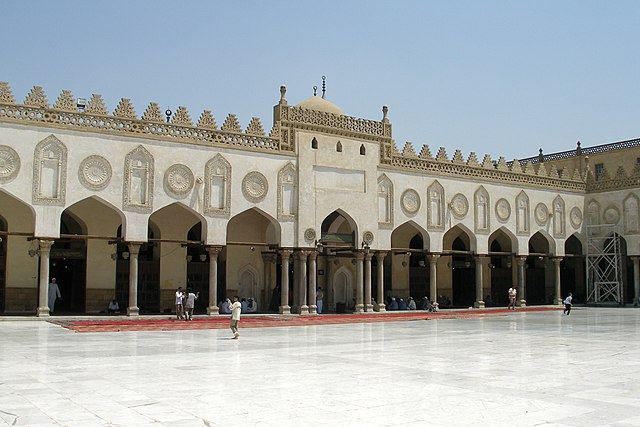Abū'l-Najm Badr ibn ʿAbdallāh al-Jamālī al-Mustanṣirī, better known as Badr al-Jamali, was a vizier and prominent statesman for the Fatimid Caliphate under Caliph al-Mustansir. His appointment to the vizierate in 1073 restored the fortunes of the Fatimid state, which had faced collapse in the previous decades, but also began a period where the vizierate was dominated by military strongmen who held power through their military strength, rather than through the Caliph's appointment. An Armenian Badr al-Jamali initiated a wave of Armenian migration into Egypt, and was the first of a series of viziers of Armenian origin, who played a major role in the fortunes of the Fatimid Caliphate over the subsequent century.
Juyushi Mosque in Cairo, founded by Badr
The Fatimid Caliphate or Fatimid Empire was a caliphate extant from the tenth to the twelfth centuries CE under the rule of the Fatimids, an Isma'ili Shia dynasty. Spanning a large area of North Africa and West Asia, it ranged from the western Mediterranean in the west to the Red Sea in the east. The Fatimids trace their ancestry to the Islamic prophet Muhammad's daughter Fatima and her husband Ali, the first Shia imam. The Fatimids were acknowledged as the rightful imams by different Isma‘ili communities as well as by denominations in many other Muslim lands and adjacent regions. Originating during the Abbasid Caliphate, the Fatimids conquered Ifriqiya and established the city of al-Mahdiyya. The Fatimid dynasty ruled territories across the Mediterranean coast and ultimately made Egypt the center of the caliphate. At its height, the caliphate included—in addition to Egypt—varying areas of the Maghreb, Sicily, the Levant, and the Hejaz.

Fatimid Caliph al-Mahdi Billah receiving an envoy from Simeon I of Bulgaria, Madrid Skylitzes, 12th century.
Fragments of mosaic pavement from the palace of al-Qa'im in al-Mahdiyya (Mahdia), on display at the Mahdia Museum
Al-Azhar Mosque in Cairo, built by the Fatimids between 970 and 972
Architectural fragment from a bathhouse in al-Fustat, 11th century CE (pre-1168 CE). Museum of Islamic Art, Cairo, 12880.





